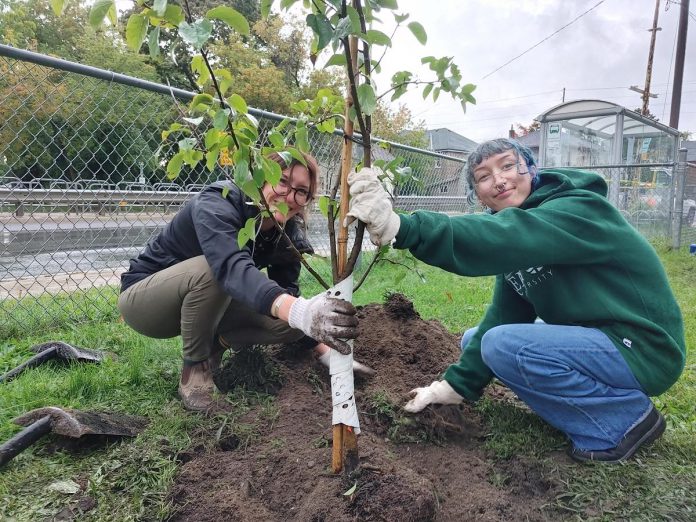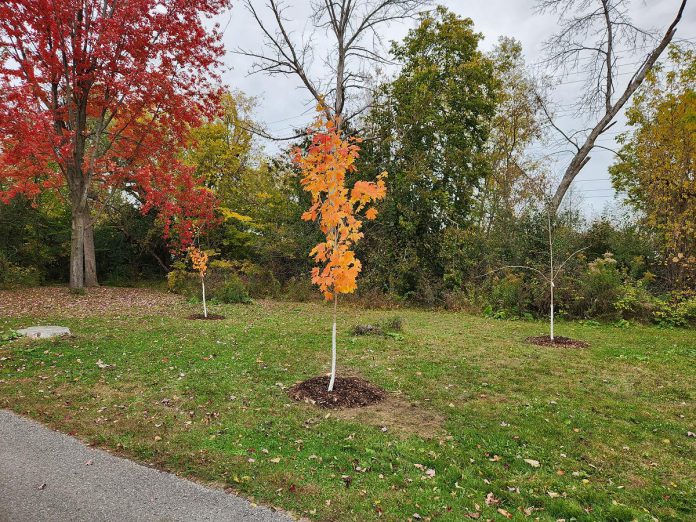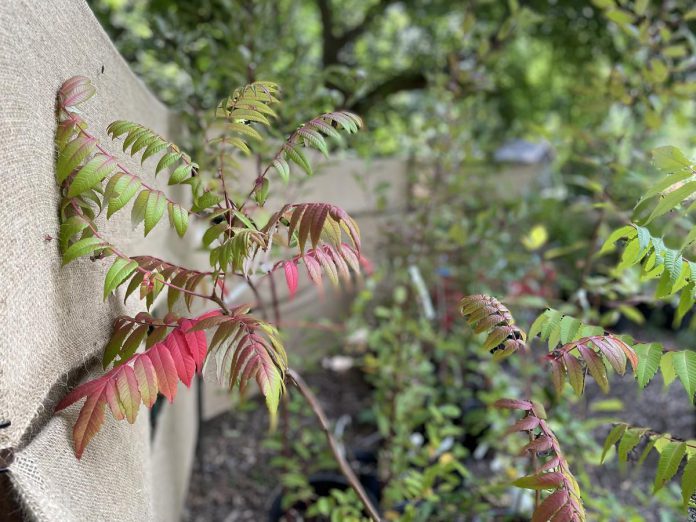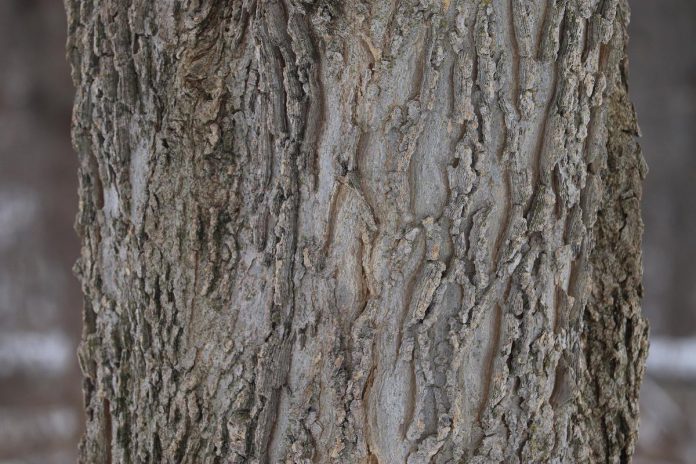
At GreenUP Ecology Park, September brings cool mornings and some peace and quiet after the bustle of our Earth Adventures summer camps.
It’s also when we collect seed and plant new trees to enhance Peterborough’s urban canopy.
Here are four reasons to plant a tree and shrub of your own, and a few other ways to get involved in local conservation work this fall.
1. Fall weather is ideal for planting

Most native trees and shrubs thrive when planted in the autumn because they focus on root development rather than expending energy on foliage, flowers, or seed.
The moist soils and cooler temperatures assist with root growth too.
However, most native conifers do better when planted in spring because evergreen species do not go dormant in winter like deciduous trees do. Evergreen trees and shrubs that are planted in early autumn will benefit from extra watering and an insulating layer of mulch.
2. There’s no time to waste
Planting trees and shrubs is a great way to take climate action, since trees help sequester (store) excess carbon from the atmosphere.
Trees and shrubs are also instrumental for weathering the effects of climate change, including extreme heat and increased flooding. For example, planting a deciduous tree or large shrub in a south or west-facing yard can cool your home in summer and allow in additional sun in winter.
By planting a tree at home, you are also helping the wider community. Studies show that urban neighbourhoods with substantial canopy cover experience fewer heat-related illnesses and deaths than ones with limited tree cover. Be a good neighbour and plant a tree (or five).
3. Woody plants are (relatively) low maintenance

If you’re daunted by the prospect of maintaining a big blousy pollinator garden, a tree or shrub might be more your speed.
Establishing healthy woody plants still takes work; however, it is less laborious than managing a whole garden. Most important is to water your new plants regularly for the first few weeks or months after planting, especially if rain is irregular.
Another important fall task is to protect your trees and shrubs from rabbits, voles, and deer. We recommend putting trunk protectors on trees less than two inches in diameter, and chicken wire cages around young, multi-stem shrubs. Make sure to remove the trunk protectors next spring to prevent fungal issues.
‘But wait,’ you might be thinking, ‘what about the leaves? Raking is so much work!’ It is better for the environment — and your back — to leave the leaves where they are. Leaves provide critical habitat for overwintering insects, such as fireflies, and they return nutrients to the soil when they break down. Unless it is very thick and dense, leaf cover will not kill your lawn.
If you must, rake leaves into your garden beds or an out of the way pile where they can break down over time.
Editor’s note: Another option is to mulch your leaves using a lawnmower, which will help them break them down more quickly to nourish your lawn. You can also gather up mulched leaves and at them to your compost pile, or spread them around trees and shrubs or on on garden beds.
4. Trees and shrubs provide excellent winter interest

When flowers start to fade, it’s the shapes, colours, and textures of trees and shrubs that carry our gardens through the colder months.
Interesting bark adds dimension and texture to an otherwise bland winter landscape. For example, American Sycamore (Platanus americana), Hackberry (Celtis occidentalis) and Bluebeech (Carpinus caroliniana) all have distinctive bark.
Shrubs also provide winter interest. The classic example is Red Osier Dogwood (Cornus sericea), whose red stems brighten dull grey days. Other shrubs retain berries well into the winter months, such as Staghorn Sumac (Rhus typhina) or the aptly named Winterberry (Ilex verticillata).
Ecology Park still has lots of trees and shrubs available at our nursery. Purchasing from Ecology Park directly supports the work of GreenUP. Check out our plant catalogue and current inventory at greenup.on.ca/native-plant-nursery. Alternatively, come by the nursery and speak with our knowledgeable staff. We are open Thursdays from 10 a.m. to 6 p.m. and Fridays to Sundays from 10 a.m. to 4 p.m. until Friday, October 11th.
Don’t have a space to plant your own tree or shrub? No problem! Here are additional ways to support local conservation efforts this season.
- Register for the free Saving Native Seeds: A Workshop Series, beginning with “Part I: Seed Collection 101” at GreenUP Ecology Park on Wednesday, September 25th from 4 to 6 p.m. led by Vern Bastable, director of Ecology Park and a certified tree seed collector. Participants are then invited to attend “Part II: Field Trip” at Kawartha Land Trust’s Dance Nature Sanctuary near Young’s Point on Tuesday, October 8th for hands-on seed collection. For more information and to register, visit savingnativeseeds.eventbrite.ca or contact Ecology Park staff at 705-927-1104.
- Get out for a walk or roll at Ecology Park or another nature area to enjoy the fall colours. Take time to learn about the species you see.
- Lend a hand at the City of Peterborough’s fall treeplanting event, happening from 9 a.m. to 1 p.m. on Saturday, September 21st at Kiwanis Park (234 Middlefield Rd.). For more information and to sign up as a volunteer, visit peterborough.ca/trees.


























